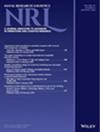基于仿真实验的海运集装箱码头靠泊区船舶交通优化
IF 2.1
4区 管理学
Q3 OPERATIONS RESEARCH & MANAGEMENT SCIENCE
引用次数: 7
摘要
海上运输在区域间货物运输和运输成本最小化方面起着主导作用。港口管理者/运营商面临的主要挑战之一是集装箱或船舶交通量的增加,这可能会影响港口集装箱码头的生产力。基于数学和仿真的泊位分配模型有助于解决集装箱码头的物流问题。然而,现有的模拟方法在优化可能影响泊位操作或港口生产力的相关因素时计算量很大。在本研究中,我们提出了一种将模拟与实验设计(DOE)相结合的计算效率方法来优化集装箱港口的生产力。此外,基于马来西亚集装箱码头的案例研究,我们系统地研究了拖轮引航、泊位数量、起重机数量和队列类型对港口集装箱码头生产力的影响。研究发现,只有泊位数量、起重机数量和队列类型对港口生产率有显著影响。建议采用低箱值、先得排队的方式为船舶服务。通过我们的优化模型,我们可以达到86%左右的最大生产率。此外,通过我们的方法观察到,与码头现有的港口生产率相比,港口生产率提高了约22%。本文章由计算机程序翻译,如有差异,请以英文原文为准。
Optimization of ship traffic at berthing areas of maritime container terminals via Simulation Experiment
Maritime transportation plays a leading role in the movement and minimization of transportation costs of goods between regions. One of the major challenges faced by port managers/operators is the growing number of containers or ship traffic which can affect the port container terminal productivity. Mathematical and simulation based models for berth assignments can help to solve such logistic problems in container terminals. However, existing simulation approaches are computationally intensive for optimizing the relevant factors that may affect the berth operation or port productivity. In this study, we propose a computationally efficient approach of combining simulation with Design of Experiments (DOE) to optimize the container port productivity. Further, based on a case study of container port terminal in Malaysia, we systematically examine the effect of tug pilots, berths numbers, cranes numbers and type of queue on port container terminal productivity. We found that only berth numbers, crane numbers and type of queue had significant effect on port productivity. It is recommended to adopt low container value, first serve queuing approach for serving the ships. We could achieve a maximum productivity of around 86% through our optimization model. Further, an increase of about 22% in port productivity as compared to the existing port productivity of the terminal was observed through our method.
求助全文
通过发布文献求助,成功后即可免费获取论文全文。
去求助
来源期刊

Naval Research Logistics
管理科学-运筹学与管理科学
CiteScore
4.20
自引率
4.30%
发文量
47
审稿时长
8 months
期刊介绍:
Submissions that are most appropriate for NRL are papers addressing modeling and analysis of problems motivated by real-world applications; major methodological advances in operations research and applied statistics; and expository or survey pieces of lasting value. Areas represented include (but are not limited to) probability, statistics, simulation, optimization, game theory, quality, scheduling, reliability, maintenance, supply chain, decision analysis, and combat models. Special issues devoted to a single topic are published occasionally, and proposals for special issues are welcomed by the Editorial Board.
 求助内容:
求助内容: 应助结果提醒方式:
应助结果提醒方式:


